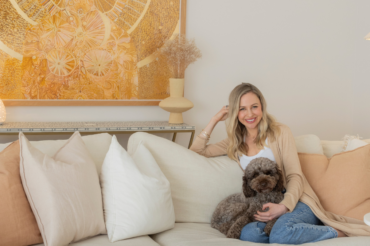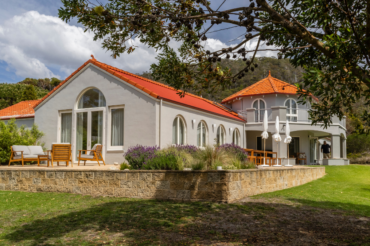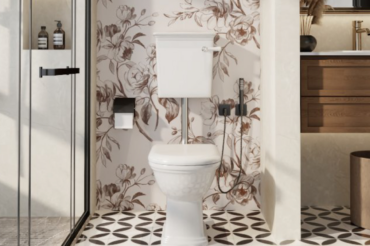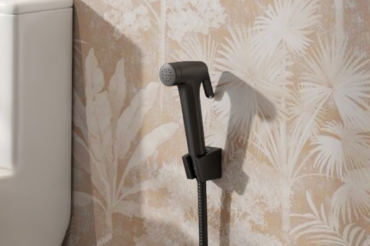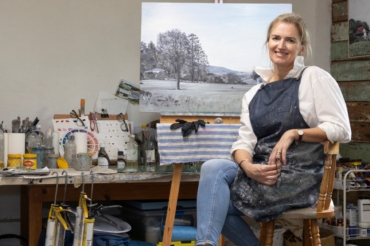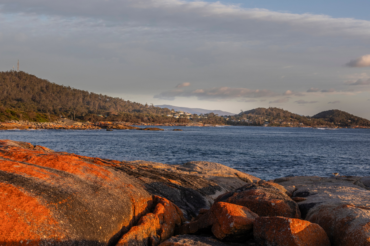
Australian author Lisa Clifford shares the secrets of the written word and her adopted hometown of Florence through her residency program.
Lisa Clifford is illuminated in a halo of white light cast down from a chandelier on the ceiling of Palazzo San Niccolò. She begins with a confession. “I have no education but if I can do it, anybody can do it,” she declares as she shares her travel experience in Italy. The acclaimed Australian author is standing before a group of writers from Australia, Britain, France, Holland, New Zealand, Denmark and America. They are 10 disciples framed by chairs, with pens poised, seeking the gospel of The Art of Writing at a residency that was once a medieval monastery at the heart of the historic quarter of Florence.
There’s a palpable sense of urgency in the room. One week is not enough to master the art of memoir and the essentials of story, but it’s a beginning. “I understand your lack of confidence,” Lisa soothes. “I know about the imposter syndrome, the bully voice, and I want to kick you over the line with all of that. The main thing is that you adore reading, love expressing yourself with words, want to get lost in a story.”
Lisa got lost in her own story more than two decades ago. Her experiences were revealed in the best-selling book that made her name in Australia recounting the trials of a long-distance love affair with an Italian called Paolo who, eventually, became her husband. The Promise is a tale of conflicting passions and cultural differences, the challenging expectations of being an Australian wife and mother in Italy.
When Lisa arrived in Florence at the age of 16, it was, essentially, to avoid the Higher School Certificate. “My mother (the Australian doyen of deportment and etiquette, June Daly Watkins) had a very glamorous life,” she remembers. “I was okay with leaving home at 16 and moving to Italy because I’d travelled all over Asia and Europe with my mother by the time I was 14.”

She spent the next 18 years flying back and forth between two countries, trying to make up her mind, should she stay or should she go? Was love, for a man and his country, enough to remain in Italy?
In 1986, aged 21, Lisa won a scholarship to the Australian Film, Television and Radio school and went on to work as an on-air radio news reporter. She worked for Channel 10 as a reporter and producer but finally admitted that she had met the love her life in the boy who rode around the medieval streets of Florence on an Italian Vespa.
Twenty-five years have passed since she settled permanently in Italy, as she shares her travel experience in Italy. She wrote Death in the Mountains after the birth of her two children, Natalia and Leo, and the book won the Australian Victorian Premier’s Grollo Ruzzene Foundation Prize for Writing about Italians in Australia. The story was based on an unsolved murder mystery at the start of last century involving the forebears of her husband’s Italian family. Another hit followed with Naples: A Way of Life winning Australian Illustrated Book of the Year in 2013.
Success as a writer has come from being an outsider but Lisa is known as “The Australian” in Florence. She has established firm friendships, though still aches for home. “I’m just so lucky that I live in Florence,” she reveals. “But I was in a really isolated bubble as a writer when I first came here. I needed contact with other writers so I started going to the UK to find retreats, I did that for about four years, and then I thought I could do them better here.”
For the past 10 years, Lisa’s Italian writing residencies have connected the hopeful with the helpful, introduced literary agents from London and Rome to debut novelists in Australia, built confidence and taught word-craft skills. Retreats are fully booked with new and returning international writers.
Many end up on the shelves of bookshops and libraries (Diane Dewey’s Fixing the Fates; Orna O’Reilly’s The Blonde in the Gondola and Victoria Smith’s The Little Lark Still Sings) but the convenor isn’t fussed if books are not published.
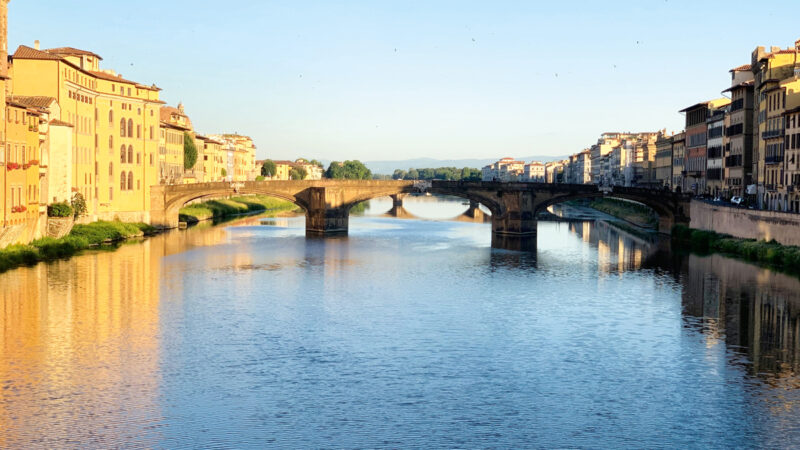
“If you turn out to be the next Suzanne Daniel, who wrote Allegra in Three Parts having undergone this residency, then that’s entirely up to you,” Lisa says. “What I really want is for you to leave Florence on fire with your own creativity; feeling good about yourself. Writing is the best therapy there is.” Our lessons at the Palazzo are punctuated with wisdom, reflection, laughter (sorry, cliché alert) and friendship. There are times for personal reflection and private writing between cappuccinos, chit-chat and chianti.
“You’ll never leap out of the slush pile unless we nail down how to create and maintain narrative momentum,” she asserts. “Tenacity and curiosity are key to writing and technique is vital but, always remember, location is a character too.”
Location is central to every plot. Florence is so filled with miracle and beauty that any attempt at description is almost guaranteed to fail. It’s a glutton’s picnic of palaces, churches, galleries and museums, so it’s simply impossible to avoid being caught in exasperating crowds of tourists queuing at gelato bars and cafeterias.

The Art of Writing delegation is not part of this throng and tours are not on the menu. “I couldn’t give a rats’ about the National Museum of Bargello or the Uffizi right now,” Lisa says, striding in the opposite direction along Piazza Lorenzo Ghiberti. “Want to see the history of humanity in a museum? That’s totally up to you. I prefer the back streets, the more unknown areas of Florence.”
Famous postcards flicker past as we career over cobblestones, past the famous Ponte Vecchio and Michelangelo’s David, traipsing along laneways into places only locals go. In the bright square of Sant’Ambrogio, there’s a food market and an unnamed restaurant serving plates piled high with beef cheeks and pasta al pomodoro, pizzas the size of dustbin lids, glasses of crisp rose.
“It’s all a ploy to coax writers into connecting with their sense of place,” Lisa laughs, seating the group at
a table by the window.
On the third day, an entirely different sensual experience comes into play at dawn in the streets outside the velvety salon of Palazzo San Niccolò. Florence is flirting and her pavements are wet with a dusting of rain. Misty wisps are tugging at rooftops but the Duomo is a beacon in sunlight.
One of the writers, New-Zealand born Christine Spring, immediately takes control of the scene. She’s a high-flying corporate director but, at heart, she is a photographer and a writer, renovating a house in provincial France.
Christine’s last epic adventure — capturing soul beauty through the images of women photographed naked outside — was published in a book called Liberating Self — A Soul’s Journey. Now she’s on a mission to complete a second edition aiming for some of the great locations of the world: Paris, the Antarctic, Florence…
“Take action and embrace soul,” she challenges, leading us through the Porta San Miniato, focusing her camera lens on a long stone staircase beneath the Basilica of San Miniato al Monte. It’s 6am and two of us are about to cast off our clothes, drape fleshy pink bits over cold steps, bottom and breasts flaunted above a waking city.

Now?
“Wait,” she cautions. “Any moment.”
Now?
“Alright. Go!”
Whoosh! There we are. Nude. Suddenly. Not as sacrilege. As art. A nun scurries past mouthing silent words in prayer. Eyes are averted. It’s freezing.
“Yes,” Christine counters, “it’s all moody clouds today but soul beauty exists in any environment.” A man on a motorbike speeds past and yells out ‘bella roba’ — beautiful things.
“Isn’t it good?” breathes Laura Barker, the American writer lying beside me on a slab amid the cigarette butts. She’s a pilgrim of the Camino trail, walked 1000s of miles across Spain and Portugal for pastries with strangers, then enrolled on a whim in The Art of Writing.
In this place, she’s a Botticelli angel, as pure as her writing is sweet, yet she’s filled with a writer’s self-doubt, defining herself as an American ‘jibber-jabberer’, a reformed alcoholic, a divorced mother of three children. Laura is not alone searching for answers on this retreat, but the plot has slackened, and our adviser suggests a recalibration. Getting your kit off in a World Heritage site with possibly more treasures than anywhere else in the world is not a core part of the course.
“I expected to get a call from the Carabinieri yesterday telling me: ‘We’ve arrested two women for indecent exposure’,” Lisa later admits. “The police have so much trouble with this kind of thing in Florence: people swimming nude in fountains or screwing on the steps of Santa Croce church.”
“Florence is a fantasy under a Tuscan sun,” Lisa says.
“A lot of people need to crack things open, leave home, buy into the dream for new sights, sounds, inspiration before they can write the first chapter in a new life.”
The concept of life in Italy not being what it’s cracked up to be is something that she wrestles with in her new book currently under revision with her literary agent.
“It’s not easy living in Italy as an Australian,” she confesses. “The traditions are extremely tight, culture is very old fashioned, there’s a lot to learn. You can feel isolated and marginalised and desperately lonely at
times, even if you have really good friends here.
“There are plenty of people who’ve come here to meet an Italian guy because they’re family oriented and they’ll make great fathers. They’re really sexy but you don’t know how difficult it is going to be living the Florentine life. It’s all about his world, his decisions, his car. He chooses the gardener and where you live. She goes along with it because she’s a mum with more voice while she’s raising the children, but he still chooses the bank account.”
The conversation has turned full circle and the chapter is closing. Ten friends are sharing an aperitivo for the last time in a suspended reality. Florence is an inspiration, a pleasure, a muse. Words written are read aloud and voices are heard, encouraged, applauded in a circle. There’s a pause.
“I’m profoundly moved,” Fiona Basile, a journalist from Melbourne, says. “I knew I’d get something out of all this but it’s great to feel that creative writing is no longer such an impossibility. I’m going home and I’m going to do something about it.” She’s haloed in the white light of a crystal chandelier.
LISA’S FIVE THINGS TO DO IN FLORENCE:
• Bargello National Museum — An amazing place for all kinds of reasons with two rooms dedicated to the glazed terracotta works created by Andrea and Giovanni Della Robbia.
• The Stibbert Museum — An extraordinary private collection of armoury, paintings and clothing in a pretty villa on the hill of Montughi.
• Via Porta Rossa Casa — An old medieval home in the centre of Florence with each floor preserved as it was in medieval times.
• La Casa del Fagioli (at Via Diego Colamarino) — Truly one of the great places to get a Firenzian steak, where all the Italians go. “They just don’t even bother opening for lunch because really who would want to work for lunch if you don’t have to?”
• Piazzale Michelangelo — Just walk around to see the marble beauty along a historic walking route that starts at the Porta San Miniato near the infamous “il Rifrullo” bar and climb up via Scalea del Monte alle Croci and Scalinata del Monte alle Croci in the footsteps of Dante.
Discover more about Lisa Clifford here
Photography by Anabel Dean & Kirsten Hills

